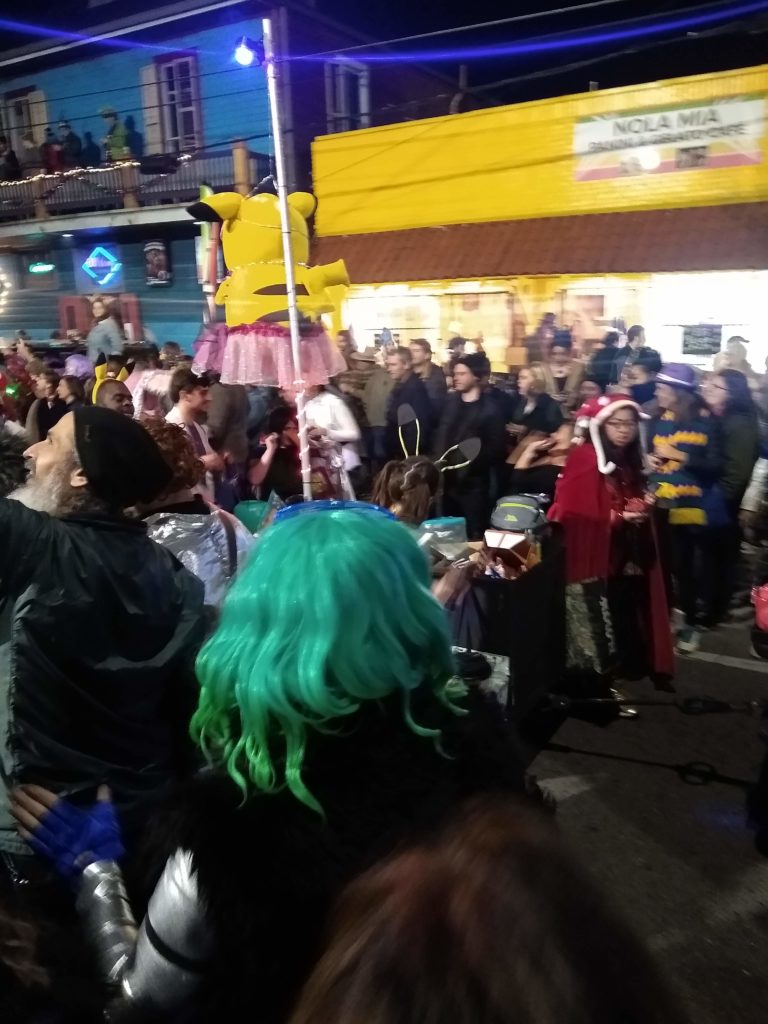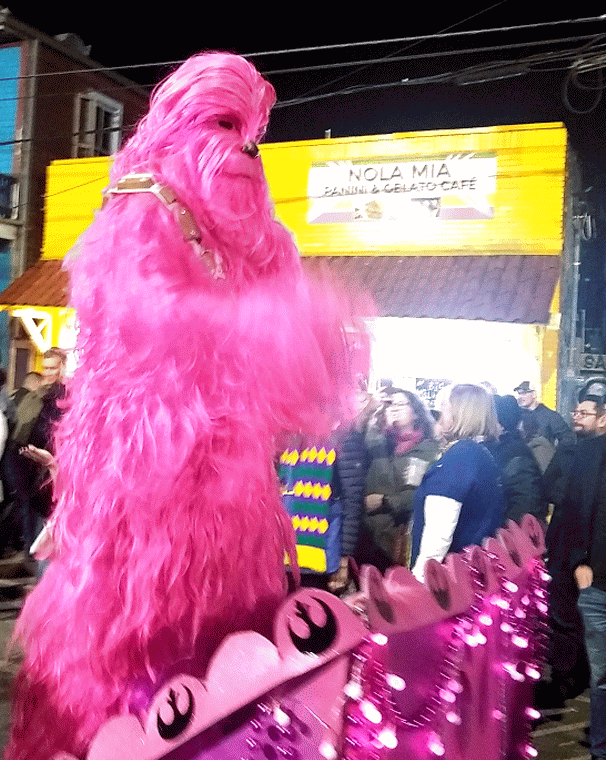We made it home just in time for Mardi Gras. This is one of those holidays that anyone of reasonable disposition has a convoluted relationship with. It’s excess. It’s tradition. It’s religious. It’s the world’s biggest free party. I love the beginning and seek to avoid the end.
I grew up spending every Sunday before Fat Tuesday at the intersection of St. Charles and Martin Luther King Jr. Blvd. in New Orleans. My aunt, my dad’s sister, lived up MLK and we’d stop in to park the car and visit for a minute before heading out to St. Charles to watch the parades. We would watch Okeanos, Mid-City, and Thoth then leave. Back at Auntie’s we’d have spaghetti in red sauce. For a Southern woman of her era living in New Orleans Auntie was not the best cook. We were on the road back home before the main parade of the night, Bacchus, even rolled.
We rarely did anything on the actual day of Mardi Gras. When we did it was in Lafayette or Metairie. Possibly Slidell. We went to New Orleans once, because my parents wanted us to see Zulu,* the only major parade traditionally led by Black people. This was the 80s. Mardi Gras krewes were forced to desegregate in 1992, but Zulu remains the only major Black krewe.
Zulu rolls in the early morning and still crowds were fierce. By the time the time Rex, the next parade showed up it was intense. The last day of Carnival and everyone seemed to be desperate for that last drink, that last high, that last throw. The crowds throbbed and pushed. My youngest brother, maybe four, was mobbed when a generous krewe member showered him with beads. My dad had to reach in and save him from grasping hands. It was madness and we all vowed never again.
While I have hit up a few Fat Tuesdays since then, even managed to have an absolute blast at one, my favorite parades are still the ones that come before the insanity of Mardi Gras. They are more local, more laid back, and for me more enjoyable. This season we started off with my favorite parade, Chewbacchus. More formally, the Intergalactic Krewe of Chewbacchus. It blew up on the national scene when, in tribute to the loss of the amazing Carrie Fisher, the Krewe of Leias did a second line that caught the attention of the major news networks.

The route has changed and expanded since we first attended back when it was a walking parade through the Faubourg Marigny but it’s still an homage to all things science fiction, fantasy, and horror. The parade is made up of a bunch of independent krewes and anyone can join. The rules are simple: “No unicorns (unless they have rocket thrusters). No elves (unless they are cyborgs). Whinebots will be air locked into the nearest Black Hole.” It’s a green parade with no gas-powered contraptions. “Floats” are pushed, pulled, pedaled, or electric. And the throws are often unique and handmade.
For a geek girl like me it is an absolutely fantastic experiences and one that is excellent for kids and families. Next, I’ll cover a couple of parades that are equally awesome, but a little more controversial.
*Zulu showed up sometime in the early 1900s. Members of a local Benevolent Aide Society dressed in ragged attire prowled the streets poking fun at the haughty, segregated, and racist, traditions of New Orleans Carinvale. Before long the always controversial look of Zulu came together: grass skirts and black face. Subversive and, certainly at the time, revolutionary, Zulu took aim not only at the white supremacy of the time by mocking white created caricatures of Blackness. It also pointed out the white supremacy fostered colorism in the Black communities whose brown paper bag, blue vein, or fine-tooth comb hair tests blocked those deemed too Black from the higher echelons of the New Orleans (Louisiana and Southern) Black communities.
